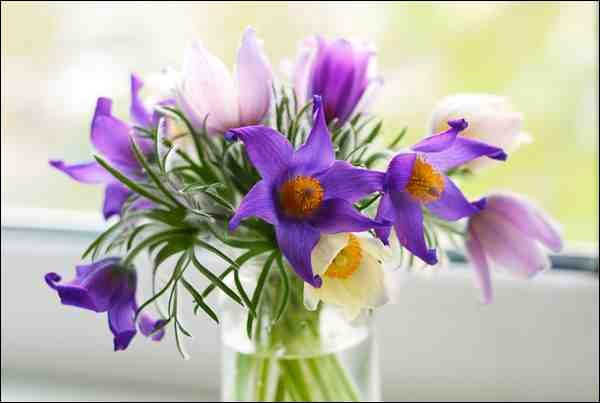Even though there's still snow on the ground in places, it's not too early to start working in your garden.
This is a perfect time to prune your trees and shrubs, before the buds break and leaves develop. Start by removing broken, dead (bark is shrivelled or peeling), diseased (cankers, blackened bark) or rubbing branches. Remove these at a natural point: just above an outward facing bud (if the branch is no thicker than your finger where you wish to cut) or just above where the offending branch joins another. For diseased branches, make your cut at least 15 centimetres below any signs of infection. Next, remove any branches that have the potential to take an eye out. To promote healing, do not make a flush cut (cut just outside the branch collar or swollen area just above where branches join) or leave a stump. If you can hang your hat on the stump, it's too long.
Some shrubs like spireas and potentillas can be pruned hard, to within 15 centimetres of the ground, to renew their appearance if they have gotten leggy or overgrown. Otherwise, avoid removing more than one-third of the branches in any one year. Don't forget to renovate your raspberry patch: remove old growth (last year's fruiting canes) and any branches that are weak and spindly. Remember to use sharp tools and wear eye protection when you are pruning. Use the right tool: for small diameter cuts (less than 3 centimetres), hand pruners are fine; for larger cuts, use a saw.
Next, tackle your herbaceous perennials before they start putting on new growth. This is especially important at this time of year for early growers like irises, ornamental grasses, daylilies and chives.
To prevent or reduce snow mold problems, use a garden rake to spread out remaining snow. Use a leaf rake to break up snow mold on exposed grass. Wear a dusk mask. Wait until after the ground has thawed (and dried) and there are signs of new growth before power raking to remove built up thatch.
If you haven't already, buy your seeds. It's not too late to order from a seed catalogue, but popular varieties may be running low. There are also lots of places in town to buy your seed. Read the package instructions to determine when you can start seedlings. It's still too early for most like tomatoes, peppers (wait until early May for these for planting out in June), but there be a few that take a while to get started like eggplants.
Take the time to clean, sharpen and/or repair your hand tools to start the season off right. Get a comfortable pair of leather gardening gloves to replace your worn out pair from last year.
Finally, take advantage of the many opportunities to learn more about gardening. Check out garden centres, nurseries, and some hardware stores to see what they're offering in the way of information sessions and demonstrations. These are usually free. As are the information sessions hosted by your local public libraries or the Saskatchewan Perennial Society (see Bulletin Board or Calendar at www.saskperennial.ca). For more in-depth learning, the University of Saskatchewan offers up a large sampling of spring gardening workshops. Check out http://ccde.usask.ca/hort or call 306-966-5546 for information on upcoming classes. And there's any number of gardening resources on the Internet including entertaining and informative videos.
After the work is done, buy yourself a bouquet of spring flowers like tulips or daffodils to brighten up your home.
- This column is provided courtesy of the Saskatchewan Perennial Society (www.saskperennial.ca; [email protected]).




